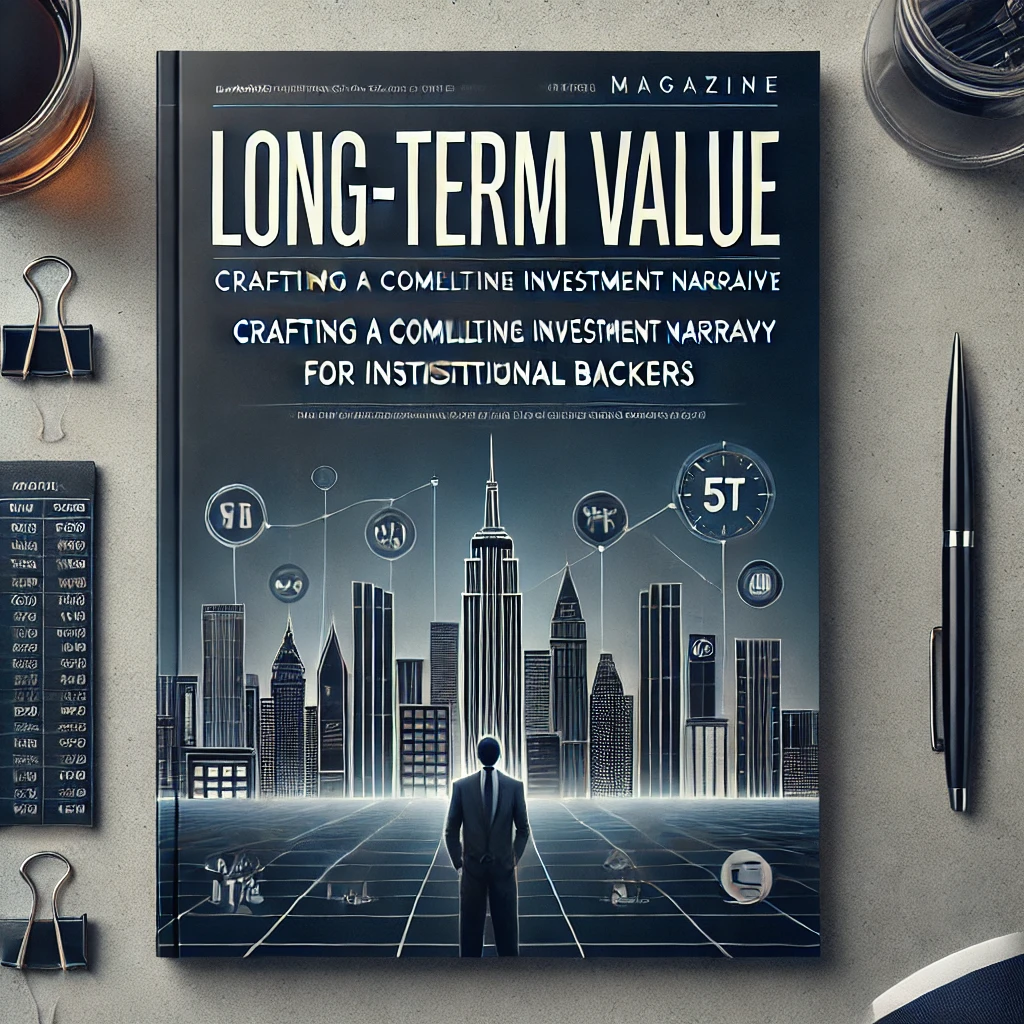Long-Term Value: Crafting a Compelling Investment Narrative for Institutional Backers
- Published Date: 16th Mar, 2025
-
5★ ★ ★ ★ ★(165)

Institutional investors seek long-term value, often looking beyond immediate returns to the broader strategic potential of an investment. Crafting a compelling investment narrative that speaks to their values and interests is paramount for companies looking to secure their backing. This narrative must highlight not only financial returns but also the strategic positioning of the asset, its resilience in fluctuating markets, and its alignment with global trends and emerging technologies.
Understanding the Mindset of Institutional Investors
Institutional investors, including pension funds, endowments, and sovereign wealth funds, have distinct investment goals and timelines. Unlike individual investors, these entities have large capital bases and prefer investments that offer stability, risk mitigation, and long-term growth. Their decision-making is highly analytical and driven by data, focusing on comprehensive risk assessments, market trends, and strategic value.
Dr. Pooyan Ghamari, a Swiss economist and founder of the ALand platform, emphasizes the importance of aligning investment narratives with institutional priorities. "Institutional investors are increasingly looking for assets that not only provide solid returns but also align with broader societal trends, such as sustainability, technology adoption, and geopolitical shifts," he notes. "Building a narrative that incorporates these themes positions a project as more than just a financial investment – it becomes a strategic, future-proof opportunity."
Crafting a Narrative That Resonates with Institutional Backers
To attract institutional investment, the narrative should encompass several key elements:
-
Financial Stability and Risk Mitigation: Institutional investors prioritize investments that offer predictable returns with manageable risks. A compelling narrative must include clear financial projections, historical performance data, and risk management strategies. Highlighting a property’s strong cash flow, low debt ratios, and low volatility can make a compelling case for investment.
-
Market Alignment and Future Trends: Understanding where the market is heading and aligning investments with those trends is crucial. Whether it's the shift to sustainable real estate, the rise of AI-driven industries, or the impact of global political changes, institutional investors want to know that their investment will continue to grow in the future. Data-driven projections and insights into market trends will strengthen the narrative.
-
Technology and Innovation: Institutional investors increasingly value technology as a differentiating factor. Whether it’s the implementation of AI for predictive analytics, blockchain for transparent transactions, or innovative building practices in real estate, showcasing how technology will drive long-term value will make the investment more attractive.
-
Sustainability and ESG Focus: Environmental, social, and governance (ESG) criteria have become central to institutional investment decisions. A narrative that highlights a commitment to sustainability – from energy-efficient buildings to community-driven projects – resonates with institutional investors who see long-term growth opportunities in businesses that align with societal values.
Leveraging Cause-Related Marketing for Strategic Advantage
Cause-related marketing can enhance the investment narrative by linking the asset with broader social and environmental goals. Dr. Ghamari points out that cause-related marketing has proven to significantly enhance brand image and investor confidence. "Investors, especially institutional ones, are increasingly prioritizing investments that align with their values. When companies position themselves as contributors to social causes, they not only improve their public image but also foster trust among investors."
Real-world examples of successful cause-related marketing in real estate include green building certifications, partnerships with local communities, and contributions to sustainability initiatives. These efforts not only improve brand perception but also contribute to long-term value creation by tapping into a market that demands responsible investment.
Practical Steps for Creating a Compelling Investment Narrative
-
Data-Driven Projections: Use predictive analytics to provide clear and actionable financial forecasts. This demonstrates a proactive approach to managing risks and identifying profitable opportunities.
-
Showcase Technological Integration: Highlight how technology will optimize operations, increase efficiency, and improve investor returns. This could include integrating AI tools for market forecasting, blockchain for transparency, or smart building systems for long-term sustainability.
-
Emphasize ESG Commitments: Detail the steps taken to ensure the project meets environmental and social standards, and provide metrics to measure ESG performance.
-
Tailor the Pitch to Institutional Needs: Understand the specific needs of each institutional investor and tailor the narrative accordingly. This means addressing their risk profiles, investment timelines, and strategic goals.
-
Build Strong Relationships: Institutional investors often invest based on relationships. Engage with them early and consistently, providing them with regular updates, transparent communication, and access to key decision-makers.
For continued learning and opportunities in investment strategies, technology-driven solutions, and global market trends, explore resources such as the ALand Blog, ALand Platform, and EE Gold.

